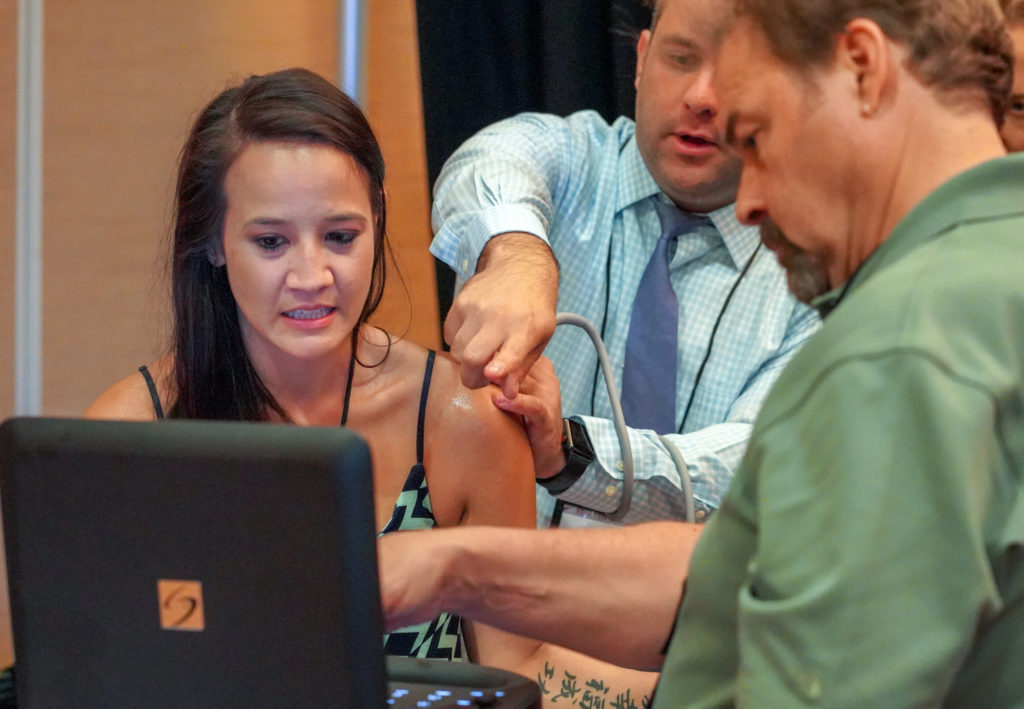
- This event has passed.
Event Navigation
Regenerative Medicine
Thursday, August 15, 2019
8:00 am – 5:30 pm | Up to 8.0 CME Credits
While the term “regenerative medicine” is an umbrella term that encompasses multiple therapeutics, the mechanisms behind their reparative properties are quite different.
CME
SpectrumCare designates this live activity for a maximum of 8.0 AMA PRA Category 1 Credits™. Physicians should claim only the credit commensurate with the extent of their participation in the activity.
SpectrumCare is accredited by the Accreditation Council for Continuing Medical Education (ACCME) to provide continuing medical education for physicians.
Schedule
8:00 am
Welcome
Katy Moncivais, PhD
8:15 am
Evidence-Based Regenerative Medicine in 2019
Corey W. Hunter, MD
- The differences between available regenerative therapies and what patient/diagnosis would indicate their use
9:00 am
Differentiating Types of Stem Cells
Aaron K. Calodney, MD
9:45 am
Break
10:00 am
Platelet Rich Plasma (PRP)
Steve M. Aydin, DO
- What blood cells are useful?
- Comparing platelet content and concentrations
- How does fibrin content influence tissue regeneration?
10:45 am
Cellular Action: How Stem Cells “Grow Up”
Katy Moncivais, PhD
11:30 am
Lunch & Networking
12:30 pm
Biased Stem Cell Lines
Corey W. Hunter, MD
1:15 pm
Stem Cell Treatments for Neuropathic Pain
Jianguo Cheng, MD, PhD
2:15 pm
Treating Discogenic Deterioration
Aaron K. Calodney, MD
3:00 pm
Break
3:15 pm
Ethical & Legal Considerations for Regenerative Medicine
Steve M. Aydin, DO
3:45 pm
Transcranial Direct Current Stimulation (tDCS) for Chronic Pain
Katy Moncivais, PhD
Learn the science behind using tDCS over the primary motor cortex, and the indications for chronic pain treatment.
4:15 pm
Prolotherapy
Charles De Mesa, DO, MPH
4:45 pm
Hands-on Labs
Separating PRP
Ultrasound of the Hip, Elbow, Knee & Wrist
Faculty
Additional Reading

- Fox, L. E., Shen, J., Ma, K., Liu, Q., Shi, G., Pappas, G. D., … & Cheng, J. (2010). Membrane properties of neuron-like cells generated from adult human bone-marrow-derived mesenchymal stem cells. Stem cells and development, 19(12), 1831-1841.
- Murphy, M. B., Moncivais, K., & Caplan, A. I. (2013). Mesenchymal stem cells: environmentally responsive therapeutics for regenerative medicine. Experimental & molecular medicine, 45(11), e54.
- Kern, S., Eichler, H., Stoeve, J., Klüter, H., & Bieback, K. (2006). Comparative analysis of mesenchymal stem cells from bone marrow, umbilical cord blood, or adipose tissue. Stem cells, 24(5), 1294-1301.
- Watts, M. J., & Linch, D. C. (2016). Optimisation and quality control of cell processing for autologous stem cell transplantation. British journal of haematology, 175(5), 771-783.
- James, K. (1990). Interactions between cytokines and α2-macroglobulin. Immunology today, 11, 163-166.
- LaMarre, J., Wollenberg, G. K., Gonias, S. L., & Hayes, M. A. (1991). Cytokine binding and clearance properties of proteinase-activated alpha 2-macroglobulins. Laboratory investigation; a journal of technical methods and pathology, 65(1), 3-14.
- Dhurat, R., & Sukesh, M. S. (2014). Principles and methods of preparation of platelet-rich plasma: a review and author’s perspective. Journal of cutaneous and aesthetic surgery, 7(4), 189.
- Antal, A., Terney, D., Kühnl, S., & Paulus, W. (2010). Anodal transcranial direct current stimulation of the motor cortex ameliorates chronic pain and reduces short intracortical inhibition. Journal of pain and symptom management, 39(5), 890-903.
- Fregni, F., Boggio, P. S., Lima, M. C., Ferreira, M. J., Wagner, T., Rigonatti, S. P., … & Nitsche, M. A. (2006). A sham-controlled, phase II trial of transcranial direct current stimulation for the treatment of central pain in traumatic spinal cord injury. Pain, 122(1-2), 197-209.
- Lefaucheur, J. P., Antal, A., Ahdab, R., de Andrade, D. C., Fregni, F., Khedr, E. M., … & Paulus, W. (2008). The use of repetitive transcranial magnetic stimulation (rTMS) and transcranial direct current stimulation (tDCS) to relieve pain. Brain stimulation, 1(4), 337-344.